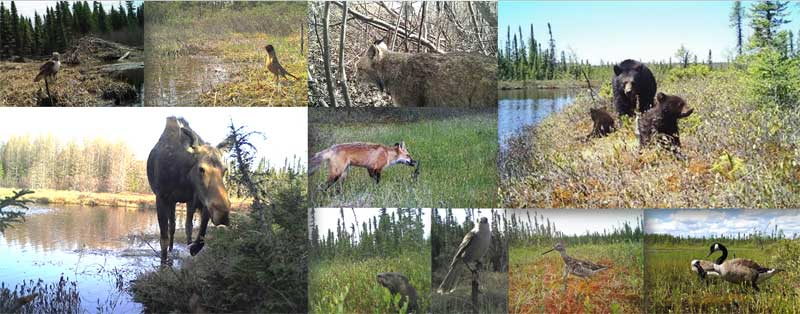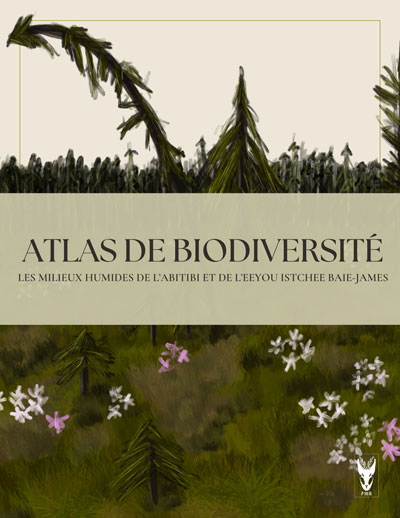
Mariano Javier Feldman
Doctorat
Diversité des communautés de vertébrés utilisant les étangs de faible superficie du Nord-du-Québec
UQAT
445 boul. de l'Université
Rouyn-Noranda (Québec) J9X 5E4
Canada (819) 762-0971 Poste 2833
E-mail:
Directeur: Louis Imbeau
Codirecteurs: Marc Mazerolle, Nicole Fenton
FORMATION ACADÉMIQUE
- Master en écologie, gestion et restauration de l'environnement. Spécialité Écologie. Université de Barcelone (UB), Espagne, 2016-2017.
- Baccalauréat en Biologie. Université CAECE, Buenos Aires (Argentine), 2011 - 2015.
- Diplôme technique en conservation de la biodiversité. Université CAECE, Buenos Aires (Argentine), 2010 - 2013.
PUBLICATIONS
- Feldman, M., Ferrandiz-Rovira, M., Espelta, J. M., & Muñoz, A. (2019). Evidence of high individual variability in seed management by scatter-hoarding rodents: does ‘personality’ matter? Animal Behaviour, 150, 167-174. Hyperlien

Projet de Doctorat
Dans les paysages boréaux, les milieux humides fournissent des services écologiques précieux et constituent des habitats de haute qualité pour plusieurs espèces. Les écosystèmes de milieux humides du Nord-du-Québec sont exposés à des risques croissants en raison du changement climatique et des menaces anthropiques, notamment la récolte de bois, le développement hydroélectrique, l'écotourisme et les activités minières, avec des conséquences potentiellement importantes sur la diversité de la faune. Les milieux humides contenant des étangs de faible superficie (<2 ha) sont particulièrement importants pour plusieurs groupes d'animaux, notamment les oiseaux aquatiques et les amphibiens, qui choisissent de préférence ces habitats pour se reposer et se reproduire. Ce projet vise à estimer la valeur de différents types d’étangs de tourbières et d’étangs dynamisés par le castor, pour trois groupes de vertébrés : les amphibiens, les oiseaux et les mammifères. Pour ce faire, nous allons échantillonner 48 étangs dans les environs de trois sites miniers du Nord-du-Québec (Casa Berardi, Nemaska et Renard) en 2018 et 2019, à raison de deux campagnes d’échantillonnage par année. À l'aide d'enregistreurs acoustiques et des caméras de surveillance, nous allons détecter la présence et identifier les espèces d'amphibiens, d'oiseaux et de mammifères. Nous comparerons l’utilisation des étangs par les différentes espèces en fonction des variables d’habitat telles que la taille, l’acidité ou la profondeur des étangs, ainsi qu’avec des variables environnementales comme la température et les précipitations. Ce projet fournira une référence et contribuera à mieux orienter la gestion des milieux humides nordiques afin de minimiser les impacts sur les vertébrés dans des futurs projets de développement du Nord-du-Québec.

Mémoire de maîtrise
- Feldman, Mariano. 2017. “Consistency in seed predation and dispersal behavior of wood mice under predation risk: do boldness matter?”. Master Thesis – University of Barcelona, 30p.
Seed dispersal by vertebrates is one of the most studied animal-plant interactions. Scatter-hoarding rodents have largely attracted the attention of researchers since they act as seed predators and dispersers, and thus affect the recruitment dynamics of many plant species. Several studies have documented predation and dispersal patterns at the population level, but recent studies suggested that individual variation might also play a key role in those processes traditionally approached from a population level. In this study we investigated experimentally the differences in the wood mouse (Apodemus sylvaticus) behavior among individuals, and the consistency within the same individual, under different scenarios of predation risk (using the scents of the common genet, Genetta genetta). A total of 25 wood mice were captured in Collserola Natural Park and video recorded in trials to analyze boldness and acorn choices. We estimated five variables that characterized their choices when facing the acorns: dispersal effort, dispersal weight effort; transport cost; consumption rate, and distance moved. We found an extraordinarily inter-individual variability in all five variables of acorn use, suggesting a consistency within individual behavior in different contexts. Our findings suggest a strong individual effect on seed dispersal behavior, indicating that the variability of behaviors between different rodents is higher than the generated by the predator scents, as no differences were detected between the trials with and without genet odors. The fact that different individuals within a population may display different and consistent behaviors warn us about considering the behavioral patterns at a population level, since they could lead to biased predictions. A challenging issue will be to address how to assess personality traits in long-term studies considering the high turnover rates in rodent populations, and their potential effects on seed predation and dispersal, resulting in a more accurate perspective on plant-animal interactions.
Mémoire de Baccalauréat
- Feldman, Mariano. 2015. “Ecology of invasive beavers in two habitats of Tierra del Fuego, Argentina”. Bachelor degree – CAECE University, 34p.
Invasive species are one of the main agents of environmental change and the second cause of threat and animal extinction. In 1946, beavers from Manitoba (Canada) were brought to Argentina mainly for furrier’s purposes and since then, the population in Tierra del Fuego (TDF) has increased to hundreds of thousands. The lack of natural predators and competitors, in addition to abundant food resources probably helped the spreading out. In chapter one I studied the factors that affect the abandonment of beaver´s lodges in the forest and steppe. Beavers often tend to move within and between colonies. For instance, the dispersal of juveniles occurs as a natural process, and the translocation, when the entire colony is transferred to a new site, is related to physical factors. I build generalized linear models to determine the relationship between the lodge´s abandonment and physical predictors. Between February and March of 2012 to 2014 I studied 45 lodges (22 in forest, 23 in steppe). The results show that abandonment is mainly affected by fluctuations in water level. The probability of abandonment depends mainly on physical variables and not on variables that characterize resource abundance. In chapter two I constructed an Estimation of age classes from recaptures and morphometric variables in both habitats. I studied the age structure in forest and steppe using the recapture of animals of known age and the weight as an estimator. Of the 129 total captures, the ones in the steppe (n=89) outweigh the forest (n=40). Considering the data obtained and previous classifications in North America, I defined three age classes according to body weight: kits (<6 kg), subadults (6-13 kg) and adults (>13 kg). The results showed a high proportion of kits in the steppe, reflecting a productive habitat with high rates of population growth, and an overrepresentation of adults in the forest, suggest that the habitat is close to their capacity. These contributions may help to build predictive models of the invasion including age structure, and highlights the need for deeper demographic studies of beavers in TDF.










